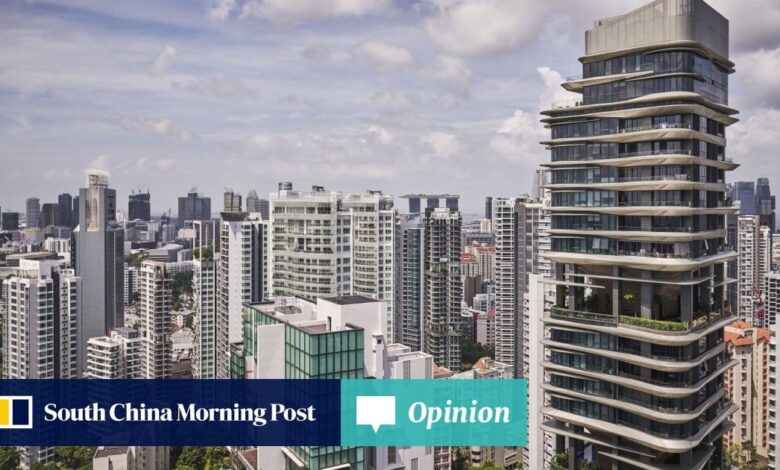Opinion: Why Singapore, Seoul and Japan are defying the real estate downturn

There are many examples of resilience and outperformance in the global property industry. In residential markets, house prices in the United States hit a record high last month amid a rise in mortgage rates to their highest level since 2000. In commercial markets, industrial and logistics assets accounted for 37 per cent of global cross-border investment in the first half of this year, the highest half-year share on record, according to CBRE.
Yet, the ones that stand out are those that have stood the test of time or involve markets that are defying major trends in the global economy. Three of the biggest trend-defiers are in Asia, one of the reasons parts of the region’s real estate industry – particularly the office sector – have fared better than in the US and Europe.
According to Knight Frank’s Global Residential Cities Index, home values in Singapore grew 7.5 per cent on an annualised basis in the second quarter of this year, the second-fastest rate among global gateway cities after Dubai. Singapore’s performance is all the more striking given that one-third of the 100 cities tracked by Knight Frank were still experiencing price declines.
While a number of factors are at work – the city state’s safe-haven appeal, pandemic-induced delays in construction and strong demand from Singaporeans – the one that is the most compelling is often viewed as the biggest threat to prices.

A survey conducted by Nicholas Bloom of Stanford University earlier this year revealed that South Koreans worked from home an average of just 0.4 days a week, the lowest among 35 economies surveyed. Even in office-oriented Asia, the office occupancy rate in Seoul is the highest along with Beijing and Shanghai, having reached “normal” levels (90 per cent or more) in mid-2022, data from JLL shows.
The fundamentals of Seoul’s grade A office market are the envy of landlords in the West. The vacancy rate stood at a negligible 1.1 per cent in the second quarter of this year due to persistent undersupply, net take-up has remained in positive territory for the past three years while rents continue to rise at a brisk pace. “There is no Covid discount,” said Rob Wilkinson, deputy managing director at CBRE in Seoul. “Quite the opposite. Landlords are increasing rents.”
Even in office-oriented Asia, hybrid working is taking root
Even in office-oriented Asia, hybrid working is taking root
Investment in Seoul’s office market has soared. According to data from MSCI, transaction volumes reached US$3.4 billion in the second quarter, 15 per cent higher than the average for a second quarter during 2015-19. The sharp fall in office deals in the US, Europe and the rest of Asia in the second quarter meant that South Korea was the world’s second most actively traded office market.
The third trend-defier is Japan, and in particular what sets its economy apart from the rest of the world. For starters, Japan is not China, which matters significantly to global investors seeking a large and liquid market in Asia without the economic and geopolitical risks that China presents.
Super-low interest rates and higher loan-to-value ratios compensate for lower rental yields on commercial properties, allowing investors to generate positive cash-on-cash returns. Furthermore, Japan is stable and predictable, a rarity today. “It’s the place to ride out the storm [and] the only real investible market in Asia with depth and liquidity,” said John Howald, head of international capital, Asia-Pacific, at Colliers.
Yet, these are risks that either may not materialise or are relatively inconsequential given the much bigger threats faced by the property industry. Asia’s sources of resilience are likely to remain resilient for some time yet.
Nicholas Spiro is a partner at Lauressa Advisory


 Offers free spin
Offers free spin